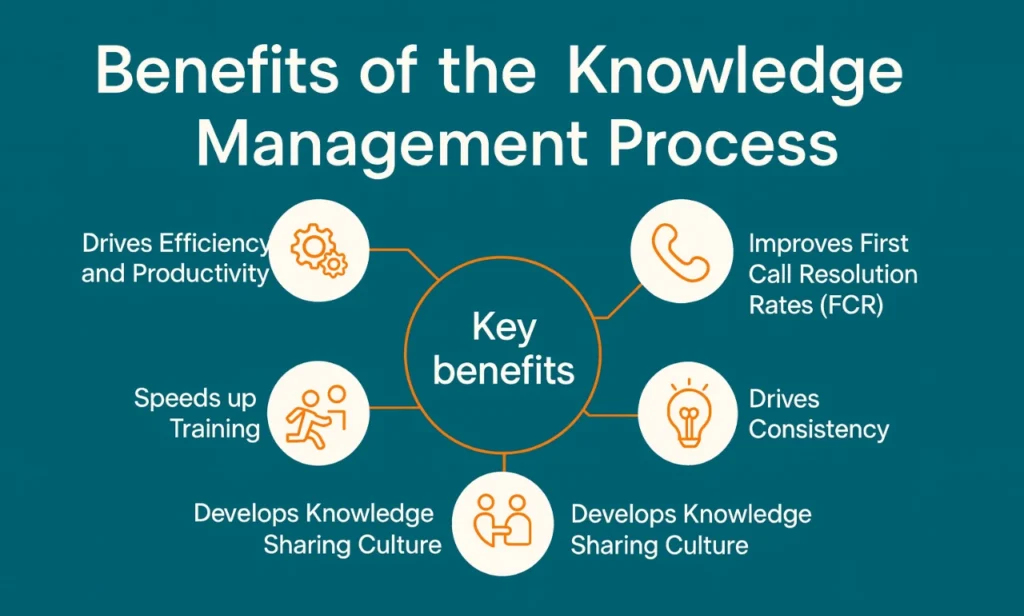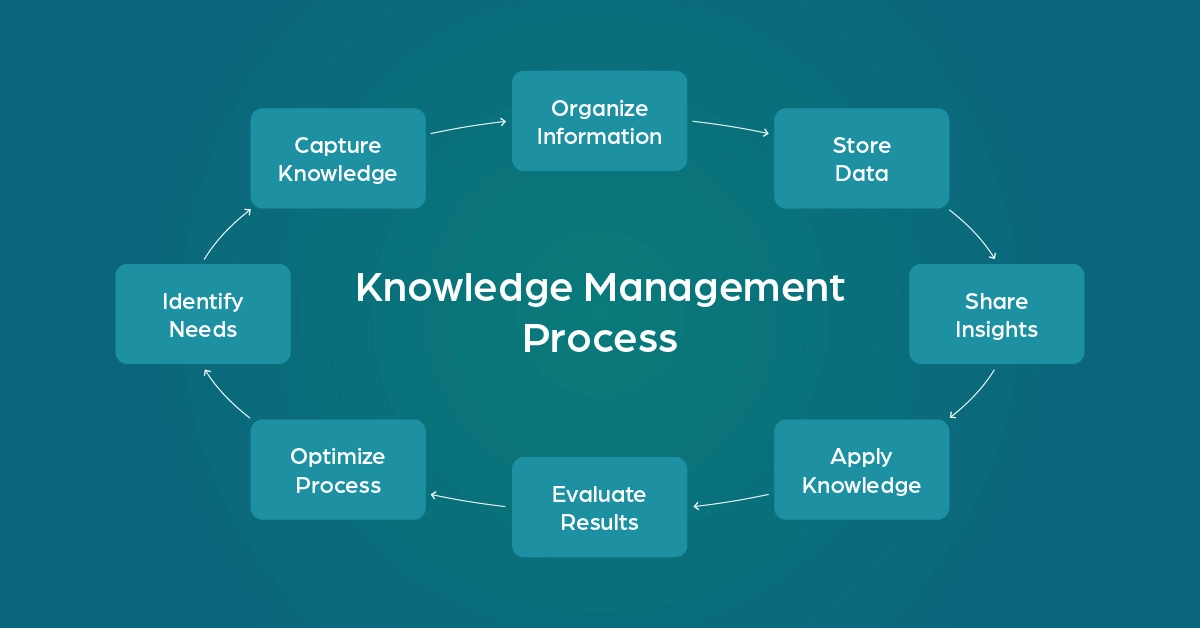Every customer interaction is a win-or-lose moment. But the problem is that your team spends too much time hunting for useful information rather than supporting customers.
McKinsey & Company found that employees spend approximately 1.8 hours every day, which means a full day every week, just seeking information. That is the time your team can spend solving cases and delivering memorable customer experiences.
This is where the knowledge management process makes a difference. It is not merely about storing information; it’s about providing the right knowledge to the right people when required.
In this guide, you’ll learn about the knowledge management process, its key benefits for your support team, the 8 stages to implement it, and how to develop a process that works smoothly.
Table of contents
What is the Knowledge Management Process?
The knowledge management process is the memory of your organization.
It is a step-by-step system used by organizations to find, organize, store, and share useful knowledge. Knowledge management process can cover a lot, like product guides or troubleshooting directions.
When the KM process is implemented correctly:
- The customer support team has accurate responses at their fingertips
- Knowledge stays in your entity even when employees leave
Without an effective knowledge management process flow, knowledge gets lost in fragmented files, emails, and long chat threads, making it difficult for your team to meet their job needs.
Major Benefits of the Knowledge Management Process

1. Drives Efficiency and Productivity
Agents no longer need to waste hours searching through drives, chats, and emails. With centralized knowledge base, agents can focus on solving issues instead of finding answers.
2. Improves First Call Resolution Rates (FCR)
Agents can quickly access the right information to resolve customer issues more effectively during the first interaction, reducing the need for follow-up calls. Using Knowmax, Telenor improved FCR by 21%.
3. Speeds up Training
Your new agents can ramp up faster when all guides, SOPs, and FAQs are in one place.
4. Drives Consistency
Regardless of who handles the customer case, all customers receive uniform responses.
5. Develops Knowledge Sharing Culture
A well-defined KM process develops a culture where employees share their experiences, fostering teamwork and improved performance.
8 Stages of the Knowledge Management Process
Step 1: Identify
Audit your existing knowledge- what you have, where it is stored, and what is missing. Involve your support team in uncovering gaps.
Step 2: Capture
After discovering valuable data and insights, focus on capturing knowledge in a consistent and organized format. This will help in storing important knowledge in the organization’s collective memory that can be easily used later.
The Beginner’s Guide To Knowledge Management
Step 3: Organize
Tag content as per topic or team. Develop intuitive folder structures and make sure everything is searchable in one base.
Step 4: Storing
Store your knowledge in accessible and scalable repositories, whether it’s SOP, FAQs, or any other knowledge.
Step 5: Share
Add important updates directly into the workflows of your customer support team. This will ensure that no one provides responses based on outdated information.
Step 6: Apply
Align knowledge into routine operations by utilizing process flows, guided decision trees, and context-based FAQs, which help control Average Handle Time (AHT).
Step 6: Evaluate
Check whether your knowledge is being considered and if it is resolving customer queries. Constantly monitor KPIs such as CSAT and FCR to know the real effect.
Step 7: Optimize
Keep your content updated. Renew outdated guides, fill missing details, and imitate top-performing formats across your current knowledge base.
By following these knowledge management process steps, a continuous improvement loop can be formed that extends within your organization.
How to Develop a Successful Knowledge Management Process?
1. Align Knowledge Management Goals with Business Objectives
Establish a connection between your knowledge management process and measurable goals such as lower AHT, higher CSAT, and quicker onboarding.
Try This Knowledge Management Implementation Guide
2. Choose the Best KM Platform as per Your Requirements
Do you know that common repositories don’t support real-time workflow? Choosing an effective KM platform enables quick search and version control, and provides access across varied channels.
3. Involve Employees in the Process
Your agents are the most important contributors. So it is necessary to involve them in the content generation process and feedback loops. Using incentives, emphasizing training, and valuing recognition are key considerations for achieving employee participation.
4. Measuring and Optimizing the Process
Consistently track key metrics, including resolution time, search success rates, and case deflection rates.
Why Smarter Support starts with Knowmax
Today, delivering outstanding customer service is not just about resolving customer issues-it is about providing solutions quickly, consistently, and accurately. That’s why having a simplified system to create, manage, and deliver knowledge is essential for every support team.
Knowmax takes this process a step ahead. With AI-driven search, a centralized knowledge base, and guided decision trees, we ensure your team always receives the right answer at the right time. This means:
- Improved First call Resolution rates
- Lower Average Handle Time
- Consistent service across different channels
Organizations such as Telenor, Zepto, and Oxygen Wallet have already experienced how we transform support functions, converting scattered information into a well-organized, user-friendly system- fostering efficiency and customer satisfaction.
If your motive is to empower agents, deliver excellent services, and future-proof your support processes, smarter support starts here:
Are you ready to transform your support system?
 11 Min
11 Min
















